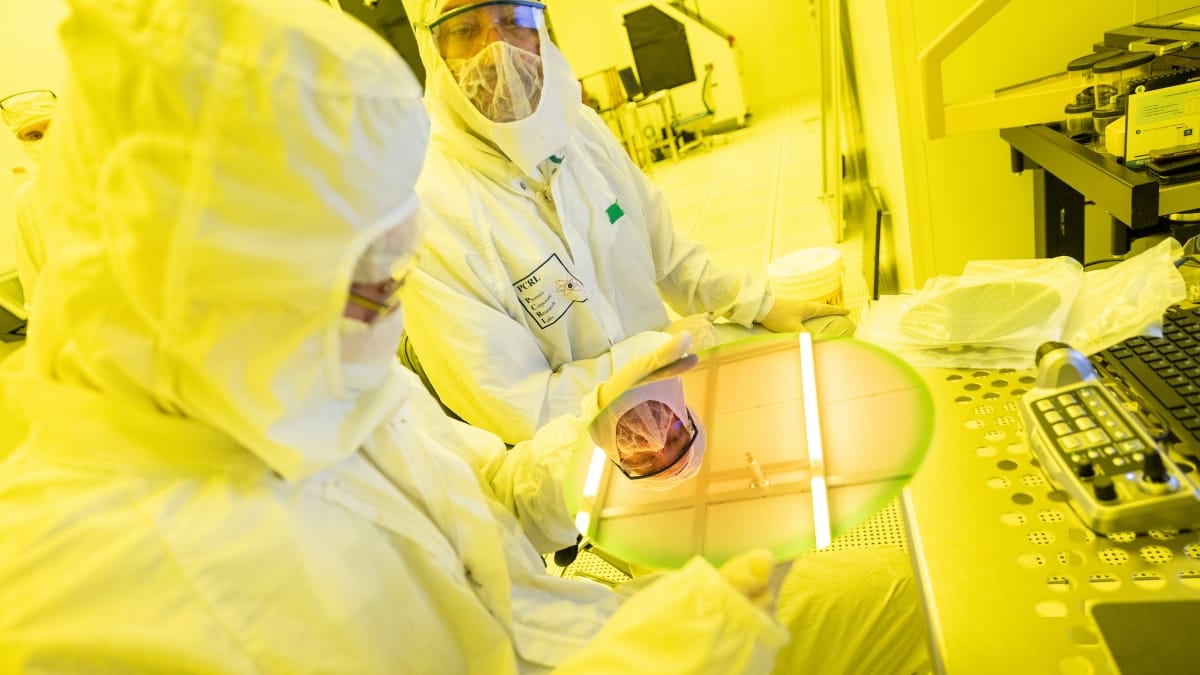Once a fledgling research school, Arizona State University (ASU) soon will hit $1 billion in annual research funding, placing the university into a rare category reached by just 33 universities across the nation.
And ASU is one of only a handful of schools to accomplish the feat without a medical school. (The university is in the process of launching one.)
MORE NEWS: 50 commercial real estate projects to know for 2025
Years in the making, the $1 billion milestone represents ASU’s rapid growth through groundbreaking and impactful research in engineering, microelectronics, space exploration, health care, national defense, sustainability and more.
“Arizona State University has established the capacity to become the leading public metropolitan research university for the 21st century, known for its excellence in teaching and research, its innovative interdisciplinary programs, and its direct social engagement,” said ASU President Michael Crow.
The goal has been to create a world-class research environment while providing more access to education than ever before. In the last year, ASU has opened its doors to more than 180,000 learners on campus and online while also becoming a research powerhouse. Building the framework to implement this new vision involved investments in bricks and mortar; attracting leading minds and innovative faculty; cooperation at the municipal and state level; and strategic federal, private and philanthropic investments, all interwoven within an entrepreneurial culture to ensure ASU inventions reach society and impact people’s daily lives.
In 20 years, state funding to ASU helped attract $3.36 billion in external funding, a threefold return on investment; train more than 23,000 graduate students and postdocs and more than 12,000 undergraduate students; land nearly 1,200 patents; and launch nearly 300 startup companies. The TRIF funding continues to this day, with the proposition extended in 2018 for an additional 20 years.
ASU now has eight “Innovation Zones” across the Phoenix metro area and, just like urban neighborhoods, each Innovation Zone has its own distinct personality, characteristics and amenities. Some are biomedical in focus, while others commit to manufacturing R&D and the next generation of computer chips. At ASU, scientists can innovate in all sorts of creative environments, from basements and garages to grand, state-of the-art research facilities, suburban research parks to revitalized city cores.
As a result, ASU consistently ranks in the top 10 for U.S. utility patents issued to universities worldwide. And Skysong Innovations has secured nearly 1,600 U.S. patents and closed more than 1,450 option or license deals with commercial partners during its years of service to ASU. The organization has facilitated more than 230 ASU startups that have collectively attracted more than $1.3 billion in external funding and generated more than $2 billion in economic impact in Arizona since 2003.
As of 2024, ASU’s buildings and online community have been filled with more than 5,000 innovative scholars, including five Nobel laureates, 12 MacArthur Fellows, 11 Pulitzer Prize winners, 11 National Academy of Engineering members, 26 National Academy of Sciences members, 28 American Academy of Arts and Sciences members, 41 Guggenheim fellows, 163 National Endowment for the Humanities fellows and 289 Fulbright Program American Scholars.
ASU’s enormous success as a top national research institution contributes directly and indirectly to the economic health of Arizona. Research expenditures are funds spent to conduct research, most often from grant-providing sources outside the university.
The National Science Foundation’s latest FY 2022–23 Higher Education Research and Development, or HERD, data show that ASU’s $904 million in research expenditures for that fiscal year place it among the top 2% of institutions without a medical school — ahead of Princeton University, the California Institute of Technology and Carnegie Mellon University. The total also places ASU among the top 4% of all research universities, ahead of the University of Illinois-Urbana Champaign, Purdue University and the University of Colorado-Boulder.
The 34% growth rate during the past two fiscal years is among the largest involving the top 50 research universities in the country.
Research dollars are spent both inside and outside Arizona, and the economic benefits of research aren’t just in those initial expenditures. There’s a “multiplier effect” taking place: Research creates additional development for the cities, county and state that a university is in, which would not happen otherwise.
Simply put, investment often attracts more investment, according to Sally Morton, executive vice president of ASU Knowledge Enterprise, the research arm of the university.
“We are at the forefront of groundbreaking research and innovation,” Morton said. “We are bridging the gap between research and entrepreneurship, and as we reach $1 billion in research expenditures, that translates into job creation and growth for Arizona.”
This recruitment of top talent has many benefits. For the 10th year in a row, ASU was ranked No. 1 in innovation in the annual “Best Colleges” 2025 rankings by U.S. News & World Report.
To learn more, go to: https://news.asu.edu/20241127-university-news-asu-cusp-becoming-1b-research-university




